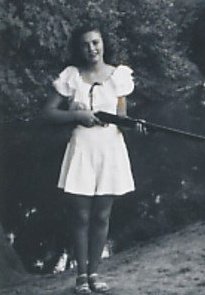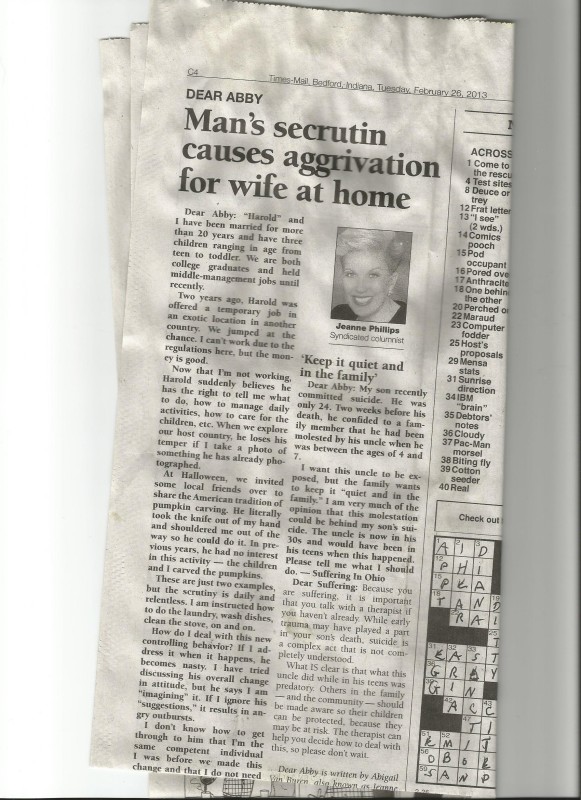 Mamacita says: I was reading an article somewhere, by somebody*, that stated that no matter how old we get, there are still times when we want our mother. Our fifty-year-old mother.
Mamacita says: I was reading an article somewhere, by somebody*, that stated that no matter how old we get, there are still times when we want our mother. Our fifty-year-old mother.
When our mothers are young, we don’t consider them ‘friends.’ We don’t consider them young, either, because when we’re very young, all adults are old. Heck, our 12-year-old cousins seem like adults. Our 22-year-old teacher and Grandma: one and the same, age-wise. No, to a child, most adults are old; they’re not sweet young things. They never were; it’s not possible.
Our mother was always a mother. She had no life before us. She’s just Mommy, when we’re young, and when she’s young. We don’t even know she was young till we look at old pictures. And then we’re blown away because, “Oh my gosh, look how YOUNG she was there!”
But as we get older, our mothers seem to stay the same, and somehow the years between us don’t matter as much as they used to.
They stay the same, that is, until we take a good long look at them and it hits us that they look old. Not just mom-old, but OLD. Wrinkly. And you know there’s white underneath the Miss Clairol. And they aren’t as sure-footed as they used to be.
This is shocking, but it’s okay, as long as the MOM is still there inside the stranger-every-day body. You know, MOM. The lady who can make magic with a word or a touch? Her? That’s the one.
Good thing WE’LL never get old like that, huh.
I’ve read that when we are in our twenties, the fifty-year-old mother is somehow at her peak of Mom-ness and Friend-ness. Our fifty-year-old mother is an expert in so many things.
What we don’t realize is that our fifty-year-old mother is still missing HER fifty-year-old mother.
And what very few of you know yet, is that your fifty-year-old mother is still as insecure and wondering as she was when she was in her twenties. Your fifty-year-old mother is still beating herself to death over mistakes she made when you were three.
How do I know this? I’d rather not say.
The seventy-year-old mother is still cool. Still Mom. It’s just that the fragility is starting to show, and the mortality thing comes to mind more than we’d like.
The fifty-year-old Mom is the epitome of Momitude. She KNOWS things. We should listen more to our fifty-year-old Mom.
Unless she’s a meddling idiot with outdated stupid ideas and a lot of unwanted advice, of course. You don’t have to listen then.
Chances are, however, that if your fifty-year-old Mom is mean and judgmental and delights in hurting people’s feelings, she was exactly the same when she was in her twenties. Bodies change a lot**. Personalities seldom do.
The following has been making the internet rounds for a long time now, and most of you have no doubt seen it before. However, I’m posting it anyway, because for some reason, it means more to me with each passing year.
============
The Images of Mother
4 YEARS OF AGE ~ My Mommy can do anything!
8 YEARS OF AGE ~ My Mom knows a lot! A whole lot!
12 YEARS OF AGE ~ My Mother doesn’t really know quite everything.
14 YEARS OF AGE ~ Naturally, Mother doesn’t know that, either.
16 YEARS OF AGE ~ Mother? She’s hopelessly old-fashioned.
18 YEARS OF AGE ~ That old woman? She’s way out of date!
25 YEARS OF AGE ~ Well, she might know a little bit about it.
35 YEARS OF AGE ~ Before we decide, let’s get Mom’s opinion.
45 YEARS OF AGE ~ Wonder what Mom would have thought about it?
65 YEARS OF AGE ~ Wish I could talk it over with Mom.
======
Let’s talk things over with Mom while we have the chance.
If your own mommy doesn’t appreciate you, come right on over here. I’m not saying exactly how old this Mommy is, but she’s in her peak and prime of Momitude. I do, however, screw it up sometimes, even now. I do my best. That’s all we can do, in any and every phase.
I have a lot of advice, but I’ll wait till you ask me for it***.
*If I knew the author and the name of the article, I’d have mentioned it up above, silly.
**Unless you’re Jamie Lee Curtis.
***Most of the time.




 Mamacita says: Every day, it seems, another icon dies. It’s getting to the point where I am almost scared of my Twitter feeds – the letters “RIP” are appearing way too often, and they are taking my childhood with them. They’re taking big chunks of my current life, too.
Mamacita says: Every day, it seems, another icon dies. It’s getting to the point where I am almost scared of my Twitter feeds – the letters “RIP” are appearing way too often, and they are taking my childhood with them. They’re taking big chunks of my current life, too. Every year, thousands of people die from exposure to dihydrogen monoxide. Widely unreported by the media and virtually ignored by government agencies, this silent toxin remains unknown to the majority of people at risk.
Every year, thousands of people die from exposure to dihydrogen monoxide. Widely unreported by the media and virtually ignored by government agencies, this silent toxin remains unknown to the majority of people at risk. Mamacita says: I’ve been reading about the “
Mamacita says: I’ve been reading about the “ they were, knew that bending the rod in the first place required strength, and that bending it BACK required even more. Holmes’ powers of observation fascinated the kids. Weird noises in the night. Strange coincidences that even an 11-year-old thought off-kilter. A bell-pull that pulled no bell. Shared inheritances. Screams in the night. What’s not to love?
they were, knew that bending the rod in the first place required strength, and that bending it BACK required even more. Holmes’ powers of observation fascinated the kids. Weird noises in the night. Strange coincidences that even an 11-year-old thought off-kilter. A bell-pull that pulled no bell. Shared inheritances. Screams in the night. What’s not to love?